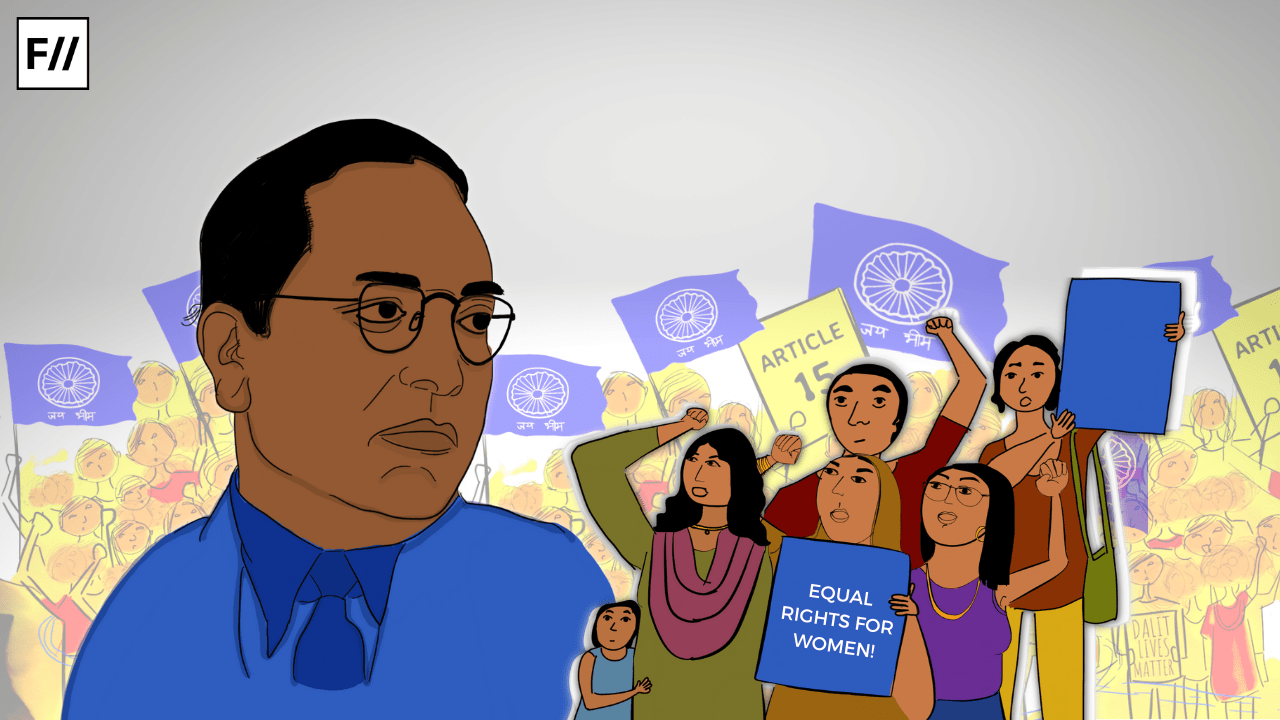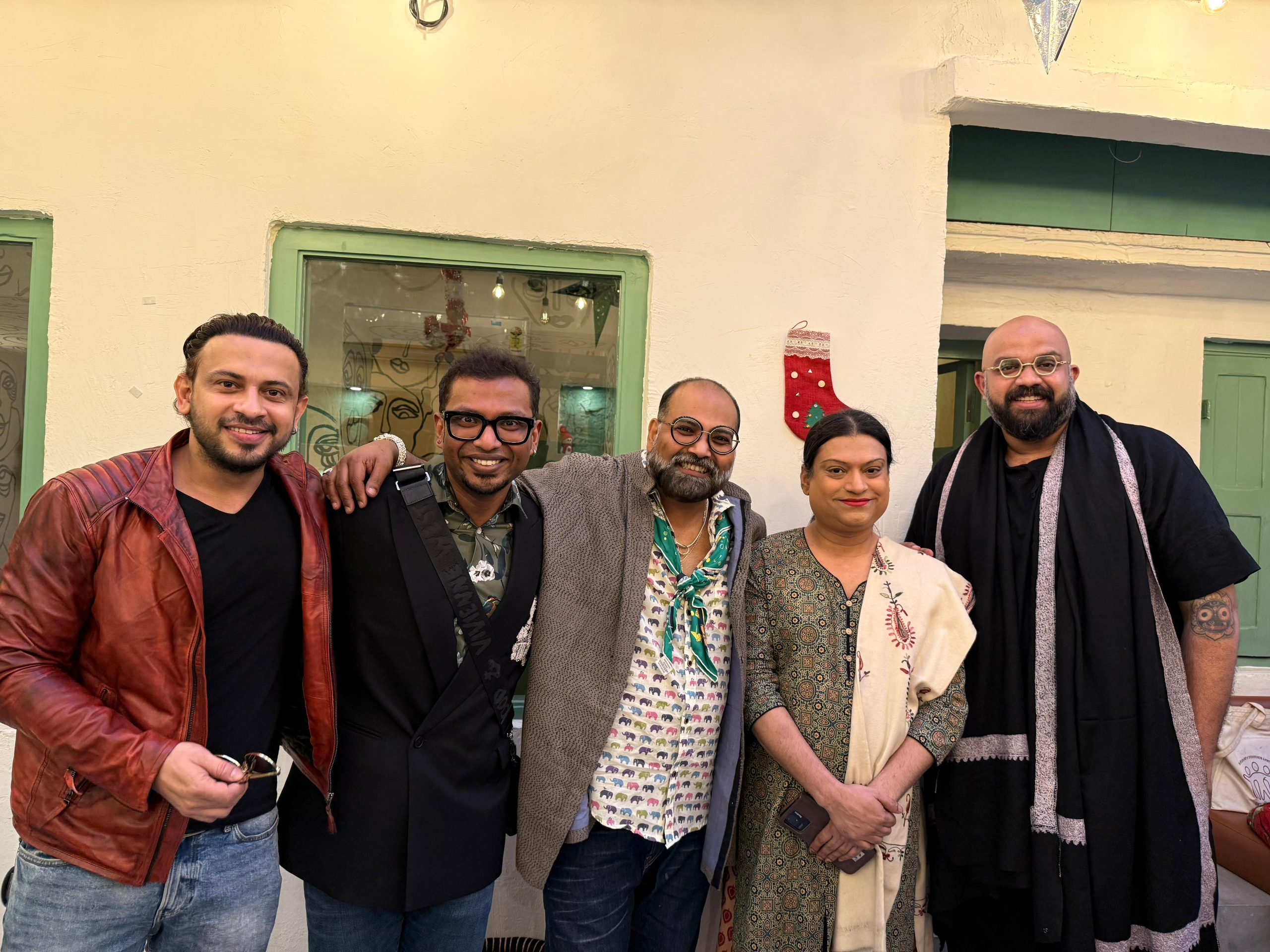When discussing feminist icons in India, we tend to overlook Dr. BR Ambedkar. His work and legacy are often restricted to being a Dalit leader and drafting the Constitution of India. However, his leadership as a champion of women’s rights is second to none.
Babasaheb Ambedkar: An intersectional feminist icon
Babasaheb Ambedkar’s legislation reflected his idea of equality and concern for the women of India. He believed in providing agency to women through freedom of choice, which in turn would lead to their empowerment.
Babasaheb’s relentless contributions to improving the situation of Indian women and guaranteeing their independence, equality, and individuality as legal and constitutional rights make up the fundamental precepts of the Indian feminist movement.

Voting rights for women
As the chairman of India’s Constitution drafting committee, Babasaheb Ambedkar played a crucial role in enacting Universal Adult Franchise and thereby legalised voting rights for women and several other minorities and marginalised groups.
He firmly held that voting was essential to citizenship and served as a means of political education for the historically deprived sections and was key to India’s voting rights.

Gender, Caste and Society
He firmly believed that caste and gender are intertwined, and it was the interlocking caste and endogamy that resulted in the evil social practices of Indian society, the consequences of which were borne by women. In his 1916 paper, Castes in India: Their Mechanism, Genesis and Development, Ambedkar outlined specific ways in which women and their sexuality are controlled to ‘preserve’ the caste system.
He identified laws that would legally equip women against the strict restrictions for marriages outside the community and widow remarriage, along with practices like Sati and girl-child marriage.

Legal protection of women’s rights
Babasaheb developed legalised mechanisms to address social inequalities and is known to have facilitated reforms like the Immoral Traffic (Prevention) Act (1956), ‘Equal Remuneration Act’ (1976), and ‘Dowry Prohibition Act’ (1961), which legally entitled women to equal wages and criminalized dowry.
He wrote extensively on women’s oppression and set up newspapers like ‘Mook Nayak’ and ‘Bahishkrit Bharat’ with sections that predominantly covered issues related to women.
His proposal of the Hindu Code Bill is considered a revolutionary measure toward the recognition and empowerment of women in India.

Maternity benefits
In 1928, as a member of the Legislative Council of Bombay, Ambedkar supported the Bill granting paid maternity leave for women working in factories. He believed that employers profiting from women’s labour should also support them financially when they are on maternity leave. He proposed that the government should also be included in the financial safety measures, as it was in the larger interest of the nation.
Babasaheb also believed that women have the right over their own bodies. He argued for reproductive rights and freedom for women and advocated for birth control facilities and contraception choices for them.

Rights for working women in India
Dr Ambedkar, as a legislator, framed many laws for women workers and labourers in India, such as ‘Minimum Wages Act’, ‘Women and Child Labour Protection Act’ and ‘Restoration of Ban on Employment of Women on Underground Work in Coal Mines’.
Between 1942 and 1946, he enacted legislation establishing a ‘Women Labour Welfare Fund’ along with several progressive legislations that dealt with equal wages for equal work, casual and privileged leaves, compensation in cases of injury, and pension for women.
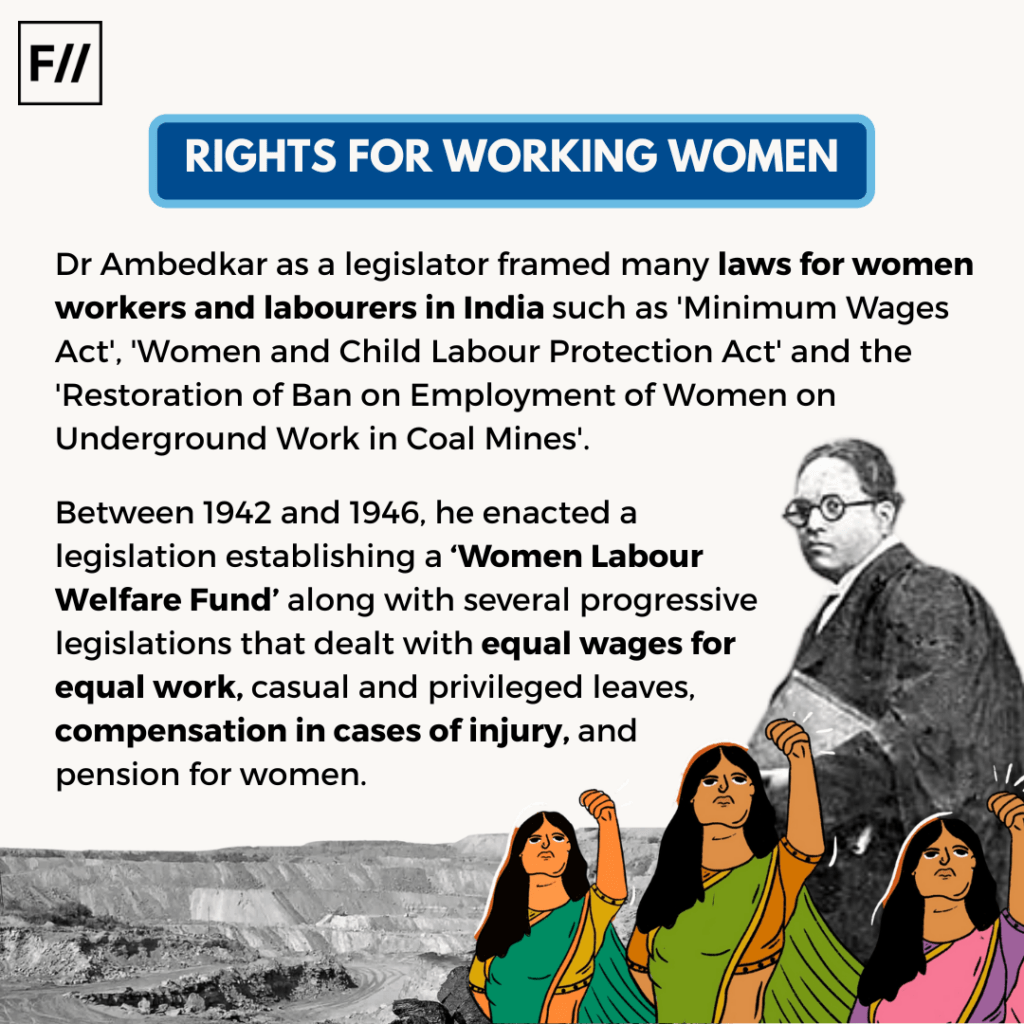
Women’s right to property and divorce
Ambedkar reformed property rights by establishing rules for inheritance, such as the elimination of birthright to property, a half-share for daughters, and the conversion of women’s limited estate to an ‘absolute’ estate. Women, who earlier had not been allowed to sell property while they were alive, and after their death, their property would go to someone in their husband’s family, were granted ‘absolute right’ in matters of property.
He also introduced clauses that allowed the personal choice of women in matters of marriage, adoption, and filing for legal divorce, and ensured their freedom, equality, and dignity.
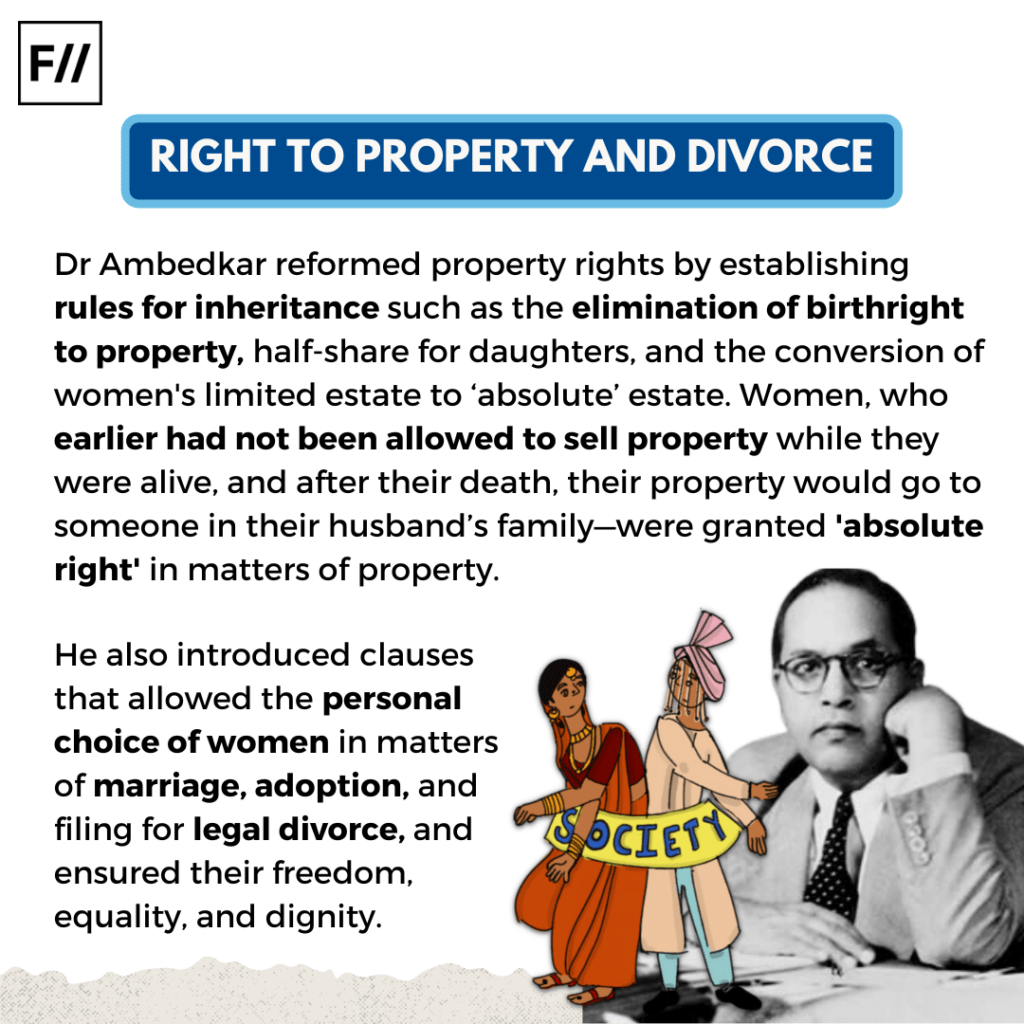
An intersectional approach to reforms
He saw how patriarchy and oppressive social norms affect upper-caste Hindu women generally, as well as how caste, class, and gender factors cause Dalit women to be oppressed on several other levels. He was among the first reformers to highlight the multi-layered impacts of patriarchy and sought intersectionality in his approach.
Ambedkar’s vision was guided by rethinking Indian modernity from the women’s perspective. He addressed Indian women’s issues irrespective of class and caste, and relentlessly worked to enforce a legal mechanism for women’s upliftment.
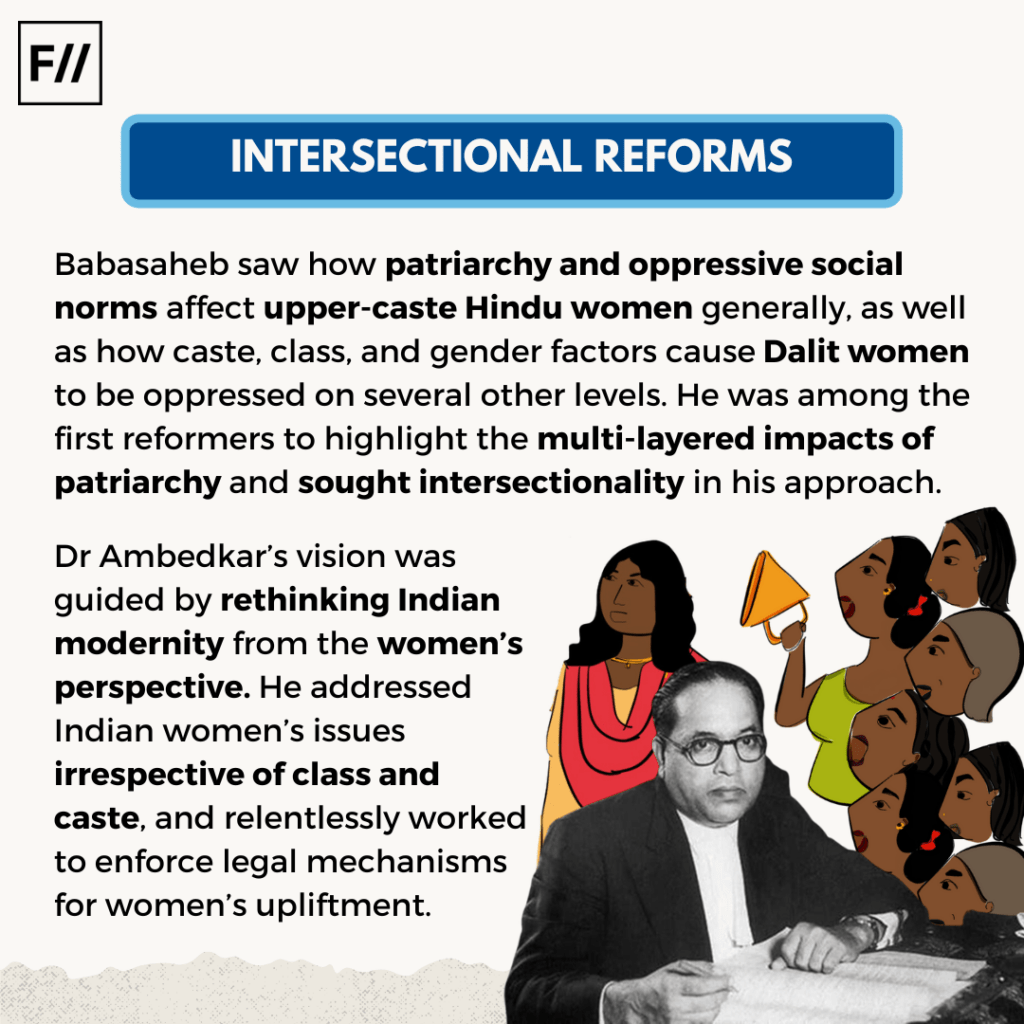
Dr. Ambedkar particularly involved women in all of his programmes and further mobilised them to demand equal status with men. For Dalit women, he sought self-dependence at par with their upper-caste counterparts.
About the author(s)
Aishwaryaa is a content producer with a passion for storytelling. She is a keen explorer of digital media and learner of feminism, seeking to drive change and social impact through her work. Her interests lie in culture, gender, and human interest stories. You can find her on Twitter, Instagram and LinkedIn.
